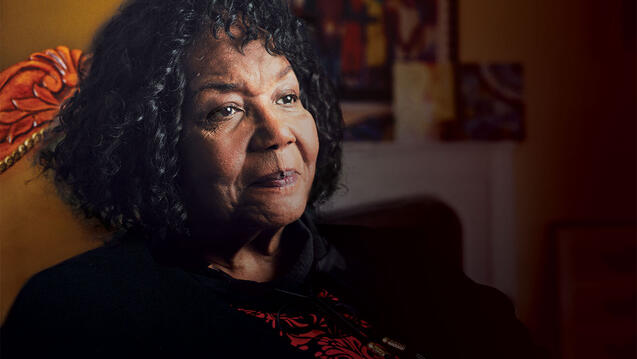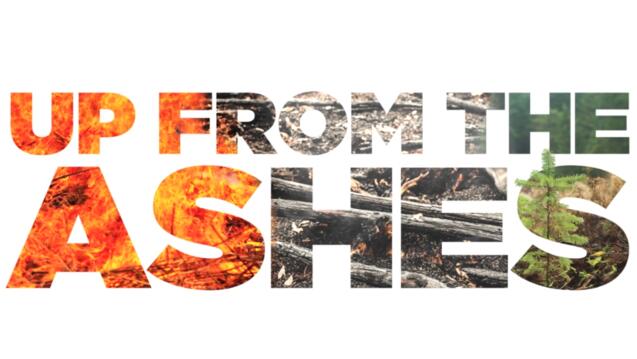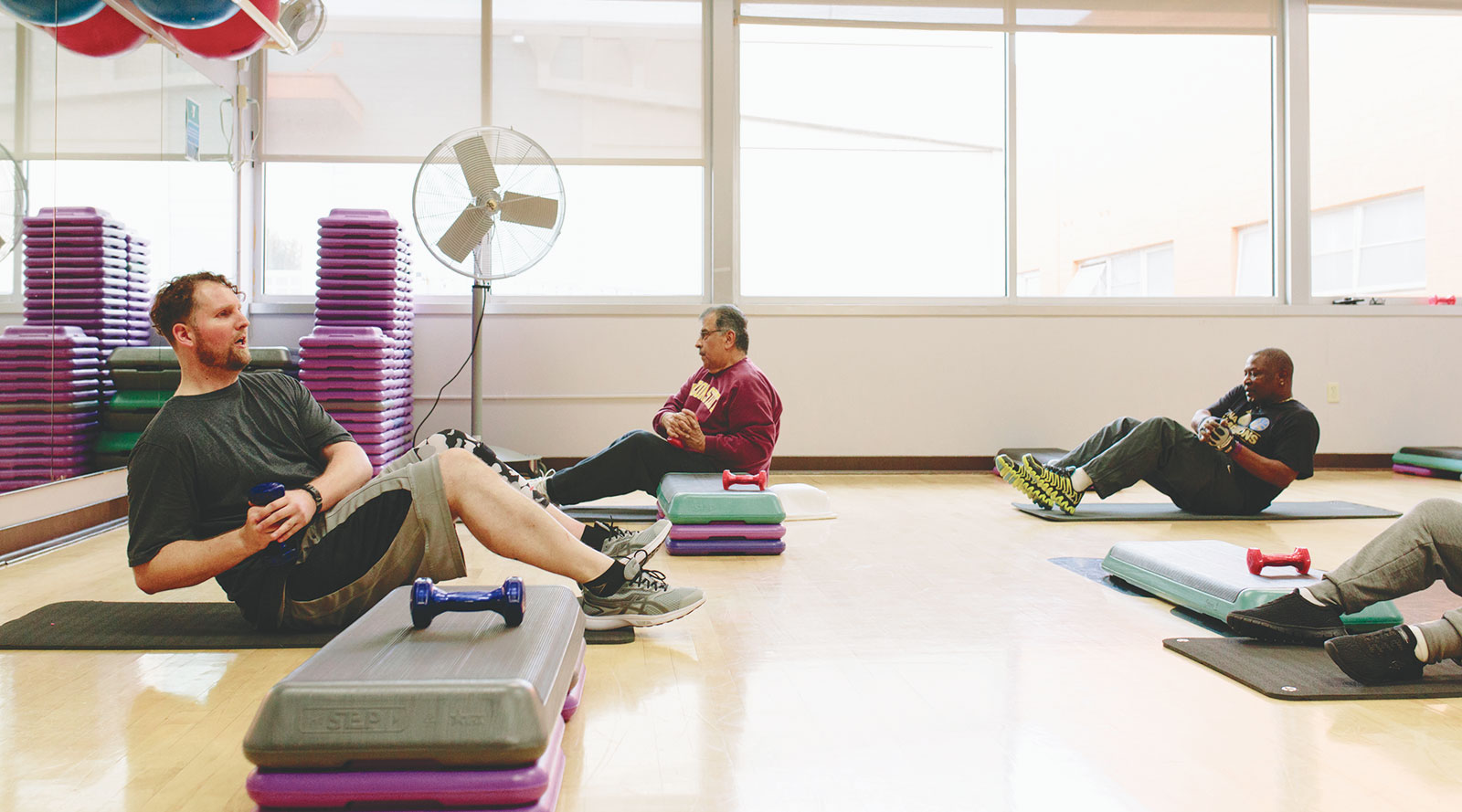
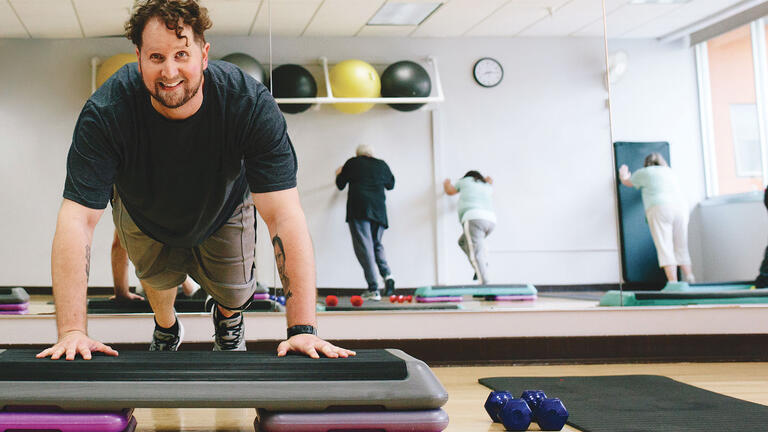
Wellness Warrior
Christian Dillon ’05 is 10 minutes into a strength and cardio fitness class at the Stonestown YMCA and starting to feel his groove.
He half steps, half dances onto an exercise platform, right foot first, then left foot. He pumps his arms above his head and then steps down on the other side of the platform. A handful of 50- and 60-somethings watch him and do the same.
When the lyrics “play that funky music white boy” come over the speakers and the bassline drops, the stepping and pumping picks up pace. Dillon works the room and offers tips: raise your knees higher; look up when you thrust your arms toward the ceiling.
“How ya doin’, Warren? Is it funky enough in here?” Dillon almost shouts over the music. Warren, a Vietnam-era veteran, puffs for air.
“Fun, fun?” Dillon asks.
Warren, smiling, tries to catch his breath. “Fun, fun,” he answers.
“Good, good,” Dillon calls back.
Later, Dillon explains that it’s not enough to be “fun” or “good” in his classes, all of which serve military vets as part of the U.S. Department of Veterans Affairs’ strength and wellness program. Everything is “fun, fun” or “good, good.” It’s part of the all-in attitude Dillon brings to his job and his love of exercise.
It’s a love bred from respect for, or maybe awe at, exercise’s recuperative powers, Dillon explains. Although he’s in a good place in life these days — a wife, a job, an apartment, a dog — it took him years to get to this point. There was a time when doctors, friends, and family thought he’d never talk or walk again. Dillon tugs at a brace on his left knee and another one on his left ankle, pulling them back to reveal a tattoo: “The Rebirth 11/21/1997.”
The message, he says, is a reminder of the day, 21 years ago, that his life changed forever.
Coming Out of a Coma
Dillon only talks about the “rebirth” when questioned. His responses are matter-of-fact. This happened, this happened, then that happened.
He was just 18 when it took place. He’d fallen in with a rough crowd at McAteer High in San Francisco. Leaving his job at a pet store one day, he was attacked: beaten over the head with a crowbar and repeatedly kicked.
Surgeons had to cut open Dillon’s skull to prevent swelling from further damaging his brain. He resurfaced after 22 days in a coma — a new person.
“I have no memory of being at San Francisco General. That was a whole month I lost,” Dillon says. “The neurosurgeon told my parents that I’d sit in a chair and drool for the rest of my life.”
Doctors advised Dillon’s mother, Jeri, to look for a nursing home. She ignored them and instead tried to find space for him at what is arguably the best center in the nation for neurological damage — UC San Francisco Medical Center (UCSF). The odds were against her. The Dillons lived on a limited income, had no inside connections, and poor medical insurance.
“She moved heaven and earth. I was her kid laying there,” Dillon says of his mom’s efforts to get him into UCSF. “I pretty much owe my life to her and my dad.”
At UCSF, the severity of his injuries began to dawn on him.
“One of my first memories is of my mom handing me a mirror. She sat next to me and held my hand,” Dillon says. “My two front teeth were cracked and partially missing from the emergency intubation, and the left side of my head was caved in. I looked like the monster from Tales From the Crypt.”
Worst of all, he was paralyzed on his left side.

Saved By Exercise
Dillon spent the next two-and-a-half months doing in-house physical therapy at UCSF. He had to learn to talk, to eat, to dress. He had to learn who his mom, dad, and sister were, and rebuild his life memory by memory, with photos and recollections from family and friends.
His days were filled with physical, occupational, speech, and neuropsychological therapy. It took him three weeks to roll onto his side. When he finally began to put weight on his left leg he was astonished to discover that he could feel it. The paralysis had begun to dissipate.
I knew I had a long way to go but I started to believe I had a future."
His outpatient rehab was three to five days a week at the Saint Mary’s Hospital Ben Berman Rehabilitation Center — kitty corner to St. Ignatius Church and Welch Field, where, as a kid, Dillon attended the occasional Mass and played baseball.
“I practiced fine motor skills and re-learned to use a fork, to pick up a pencil, and practiced word recall,” he remembers.
It was there that I first started to see the transformative power of exercise and was inspired by how my therapists helped me, and I began to want to do that for others."
He spent more than two years at the center, underwent more surgeries (15 in all), and had a titanium plate fused to the left side of his head and steel pins inserted into his left foot.
It was about this time that Dillon began exercising at USF's Koret Health and Wellness Center — mostly walking on the treadmill and doing light weights. He joined as a neighborhood member, met former Well Life Program Director Christin Anderson MSEM ’08, and started to work with her staff to supplement his physical therapy.
“Christin and I became friends, and she told me that one day I was going to be her student intern,” Dillon says.
He remembers laughing off the idea. At the time, he’d just begun to feel physically and mentally capable of handling daily life.
"It Felt Like a Dream"
In 1999, Dillon re-enrolled at San Francisco City College, where he’d taken a couple of courses after high school before the attack. “No one except for Christin and my family believed I’d be able to complete a course,” Dillon says.
In fact, California Department of Rehabilitation case workers — who help people with disabilities to live independently by connecting them to vocational rehabilitation programs — said college was a waste of Dillon’s time and refused to help him pay for it.
“They thought I should set my sights on being a grocery store bagger or checker,” Dillon says. “Those aren’t bad jobs but I thought I was capable of more.”
Community college was arduous for someone with Dillon’s injuries. And in classes with 40 or 50 students there was little one-on-one attention or accommodation for his needs.
“It takes me two or three times longer than others to read the same material because of my injury,” Dillon says. “I have to re-read it and re-read it to remember.”
His memory and reading ability grew stronger with each assignment, each class. With 21 transferable credits, Dillon applied and was accepted to USF in the fall of 2001 — four years after he was hospitalized.
But there was a problem: USF’s $45,000 tuition.
“I applied to USF because I thought the small class sizes would be better for my needs. Plus, I had a friend in Christin Anderson and I lived nearby so I wouldn’t need to pay for housing,” Dillon says. “But, to be honest, I didn’t think it would work out.”
When Dillon learned he’d received USF’s Stephen Glynn Scholarship — for students with neurological disabilities, or physical disabilities caused by neurological disorders — covering most of the cost, he was ecstatic.
“It felt like a dream. I never imagined that I would attend such an institution,” Dillon says.
The scholarship and financial aid I received was a godsend."
On top of that, he won the James F. Kenney Memorial Award, established for students who have overcome obstacles with courage, grace, and strength, and whose example inspires others. No longer able to deny Dillon’s ability, the California Department of Rehabilitation paid the equivalent of public in-state tuition.
Even today, Dillon is in touch with William Kenney, who established the Kenney Award in the name of his brother, James Kenney ’55. James, who died in a car accident just weeks before graduating, was born without arms. He used his right foot to write and eat, and his upbeat attitude and daily courage won him wide admiration at USF.
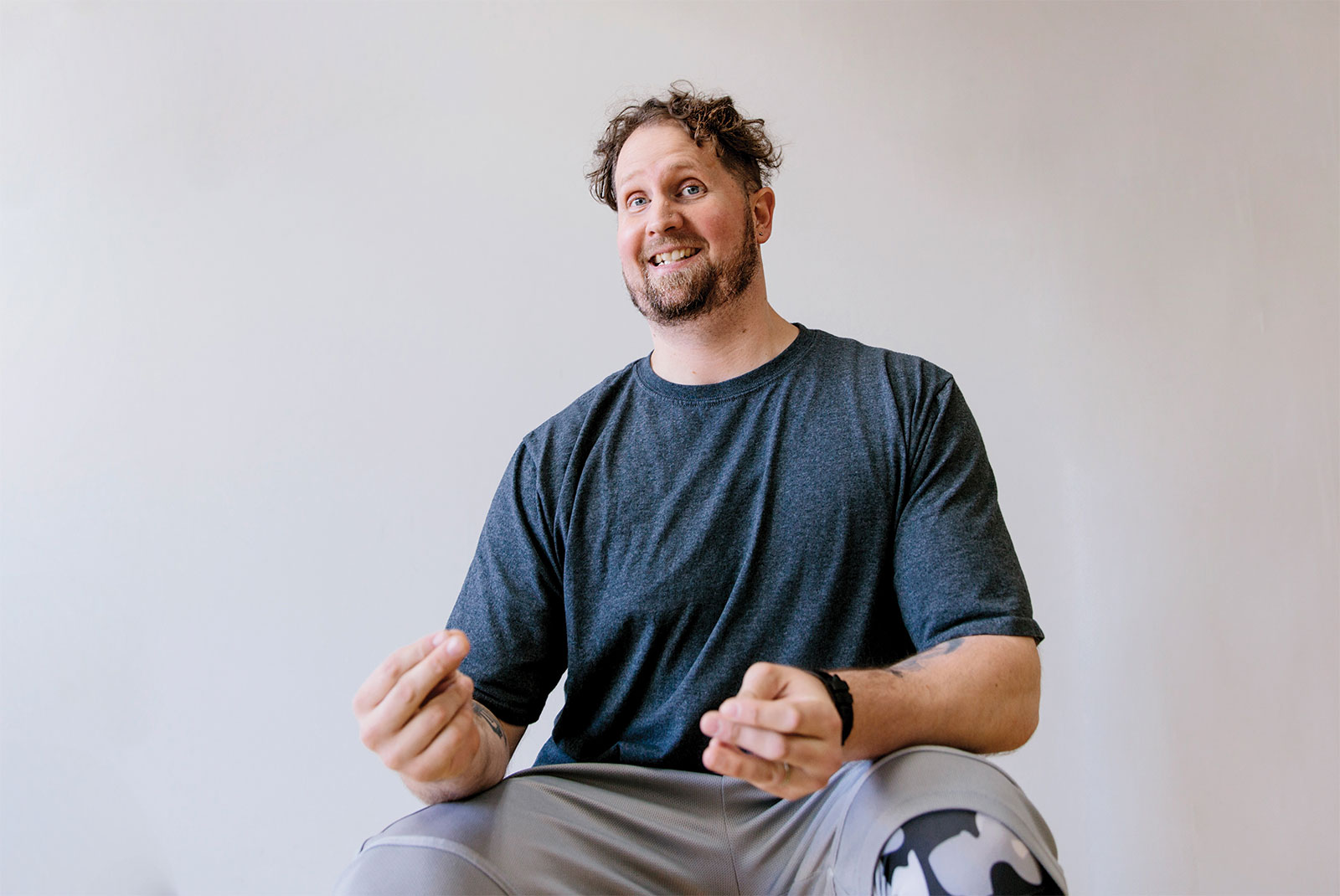
School, Sleep, Repeat
USF’s small classes and individual instruction suited Dillon. He consulted tutors, sought help from the Learning and Writing Center, and met professors during office hours. Dillon, who studied exercise and sports science (now kinesiology), also benefited from a note taker for some courses, access to private testing rooms, and extra time on exams, thanks to the university’s disability services division.
“School, homework, sleep, keeping up with my health, that's all I did. I focused and motivated myself like never before,” Dillon says.
He worked as a student intern for, you guessed it, his former exercise trainer, friend, and now mentor, Christin Anderson. His junior year, Dillon became Anderson’s program assistant and took over running the day-to-day operations when she was out.
During his four years at USF, Dillon interned as a trainer for USF’s athletics teams; became a physical therapist aide at St. Mary’s Hospital, where he was first inspired by exercise’s capacity to heal; was elected to USF’s student senate; spearheaded the university’s Disability Awareness Week; and helped pass a student senate resolution to install a ramp on the old Harney Plaza.
Outside USF, Dillon spoke to first-year medical students at UCSF about brain injuries and he worked at gyms around town as an on-call fitness specialist. In 2003-04, he served on Mayor Gavin Newsom’s disabilities committee and was honored for his work.
"Pump You Up"
In 2005, Dillon graduated from USF and went on to earn a master’s degree in recreation therapy from California State University, East Bay. Today, he’s a recreational therapist for the VA’s strength and wellness program, where he shares the benefits of therapeutic exercise with veterans, primarily from the Vietnam and World War II eras but also from Iraq and Afghanistan.
His team works with VA dieticians and psychologists to approach health through exercise, weight management, yoga, and meditative breathing. “We’re trying to treat the whole individual. Not just the symptoms but rather address the physical, mental, and social wellness elements,” Dillon says.
Their holistic approach has become a model for other VA programs across the country, winning several national VA awards. It’s also been recognized by the city of San Francisco.
“I’ve come a long way in just eight weeks,” says James Carbon, a vet in one of Dillon’s classes who served in Iraq in 2008-10 and recently suffered a stroke that left him struggling to speak and walk. “I can already climb stairs and reach for things high up in the cabinets. Christian has created such a family-friendly atmosphere, I can’t recommend it enough.”
Dillon — who’s known for imitating Saturday Night Live’s exercise duo Hans and Franz in his classes by calling out, “I want to pump you up” — says he gets to see exercise change people’s lives like it did his. But what’s even more important is the bond veterans build during their time together.
“A lot of our vets are isolated and many suffer from post-traumatic stress disorder and depression, so if they can get out to our exercise classes, that’s an additional wellness benefit from the social dimension,” Dillon says. “I’ve had vets open up and talk about depression and suicidal thoughts. If I can connect them to support services there’s nothing more important than that. It means everything to me.”
Support For Scholars
Financial aid made it possible for Christian Dillon ’04 to attend USF and to ultimately create a model fitness program for military veterans. There are many Dons just like him. In fact, 76 percent of USF students rely on financial support from donors so that they too can change the world for the better. Meet three.
Jeffrey Hsieh ’18 • Accounting
Why USF?
What stood out for me about USF was the small class sizes. Unlike many other colleges where class sizes can be 50-plus students, classes at USF had a good balance — about 20 to 30. I was able to build good relations with my professors due to that.
Did financial aid help you?
If I hadn’t received financial aid, I may not have been able to afford the high-quality education that USF offers. My degree helped me find a job as a tax associate at PricewaterhouseCoopers, for which I am thankful.
September Rose EdD ’20 • organization and leadership
How did you know USF was the place for you?
I am a city girl and love USF’s diverse population. One of the things I love most about the doctor in education program is that it draws people from different personal and professional backgrounds; for example, I'm a nurse. Students see different perspectives. Also, it’s designed for working professionals so classes are offered on weekends, which is a big help since I'm a single mother with four kids who works full-time.
You received several scholarships?
I received several partial scholarships. They’ve helped me stay on track with my educational goals. I want to graduate in 2020 — at the same time that my oldest child graduates from high school, and my other three will be promoted to middle school and elementary. I am very excited to be a role model for them.
Grace Avila ’21 • Sociology
How did you know USF was the place for you?
I didn’t at first. I originally wanted to attend San Francisco State University — but I lost some hearing due to a surgery in early 2017. My parents and I began to think I’d be too overwhelmed at a big school and that it’d be hard to navigate. I attended a Meet USF tour where a USF professor offered a short sign language lesson. At the beginning of the lecture, the professor asked who thought being deaf was a culture? Only I raised my hand. At the end of the lesson, he asked again and everyone raised their hand.
You got a scholarship?
I received financial aid and the James F. Kenney Award, which goes to a student who has overcome hardship. I’m a first-generation college student, and my financial aid allowed me to attend my dream school that best fits my needs. I am beyond blessed and grateful.
